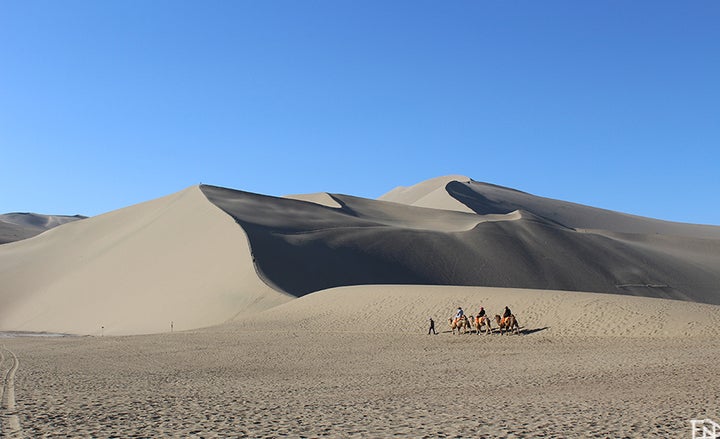
“Cave Temples of Dunhuang: Buddhist Art on China’s Silk Road,” a new exhibit at the Getty Center in Los Angeles, has been generating buzz for its impressive replicas of Buddhist art in the Gobi desert ― but there’s nothing like seeing the original paintings and sculptures in China in person. This spring, I led a group of intrepid travelers to the Mogao Caves hewed from isolated sandstone cliffs near Dunhuang ― a historic center of Buddhism on the Silk Road.

Stepping into the nine-story Tang Dynasty (618-907) temple above to view the 36 yard-high Buddha statue inside is an experience unlike any other ― no photograph or video can accurately capture its overwhelming scale and majesty. The hundreds of shrines at this UNESCO World Heritage Site were carved into these cliffs beginning in the 4th century ― after a monk had a vision of a thousand Buddhas at the site. Today, more than 490 caves, 2000 sculptures, and 45,000 square meters of paintings remain.
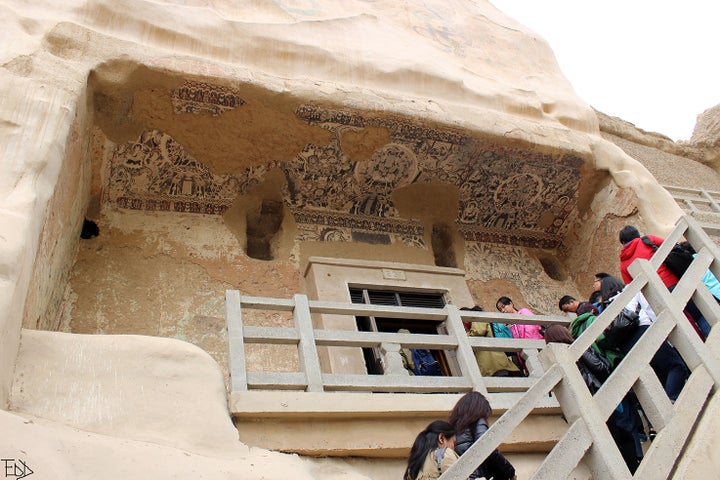
Wandering through the caves, I thought of all the Buddhist rituals and sutras that had been performed over the centuries while the murals were being painted ― and tried to imagine the caves as an active place of meditation and worship. Photography within the caves is not permitted, since the flash of a camera would cause damage to the exquisite frescoes inside. I was allowed, however, to take photos of these exterior images as we stepped into one of the caves (National Geographic photos of the reclining Buddha and Buddha’s retinue can be viewed here).

The fact that the murals in these once-abandoned caves have survived at all is somewhat of a miracle ― they have weathered damage from sandstorms, earthquakes, Muslim iconoclasts, European treasure hunters, and White Russian soldiers. The preservation of these breathtaking Buddhas and bodhisattvas is due in large part to the extraordinary efforts of Zhou Enlai, the first Premier of the People’s Republic of China, and artists that guarded the caves from desecration during the Cultural Revolution.

These days, tourism poses the biggest threat to the fragile cave paintings at this historic global crossroads. Thankfully, the Getty Conservation Institute is helping to restore and conserve the artwork in the caves, and the International Dunhuang Project is creating a digital archive of artwork and scriptures from the caves found in collections around the world. As as a professor of literature, language, and cultural heritage, my favorite cave is the “Library Cave,” in which tens of thousands of manuscripts were found ― including the Jesus Sutras and a ninth-century Buddhist “Diamond Sutra,” which is the oldest dated complete printed book in the world.
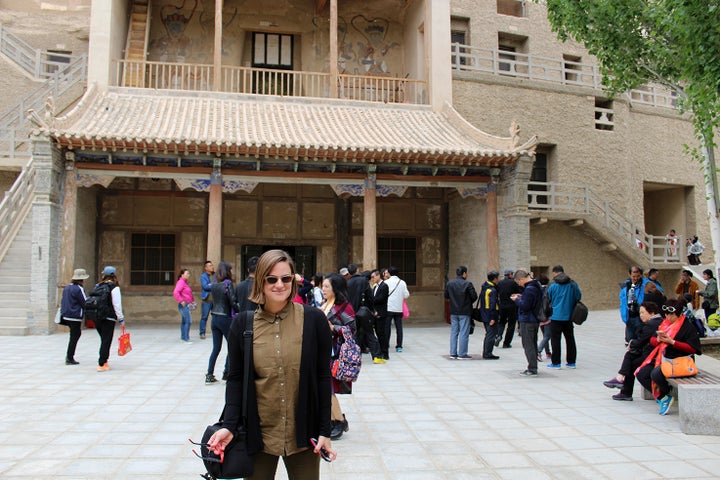
The religious and literary treasures found inside of the Library Cave are connected to an array of religions (Buddhism, Taoism, Manichaeism, Zoroastrianism, Confucianism, Nestorianism, and Judaism) and languages (Chinese, Tibetan, Khotanese, Sanskrit, Uyghur, Sogdian, Syriac, Hebrew, and others). Unfortunately, not many of the manuscripts remain in China today, as a large quantity were “sold” for pitiful sums to early 20th century European archaeologists, and others were lost on the way back to Beijing in 1910.
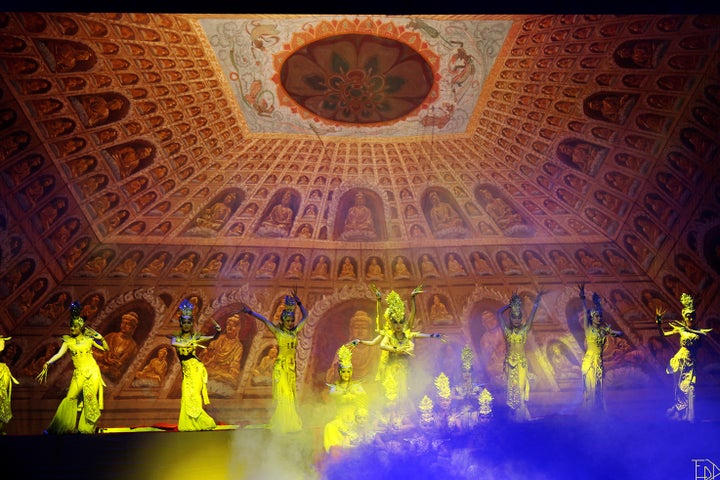
Despite being tired from a full day of exploring the caves, our adventurous group enjoyed an evening performance in Dunhuang featuring the history of Buddhism and the construction of the caves. From Chinese opera to Orientalist belly-dancing and contortionist tricks, the performance brought together many different performance styles to provide a night full of entertainment in an otherwise quiet oasis city.
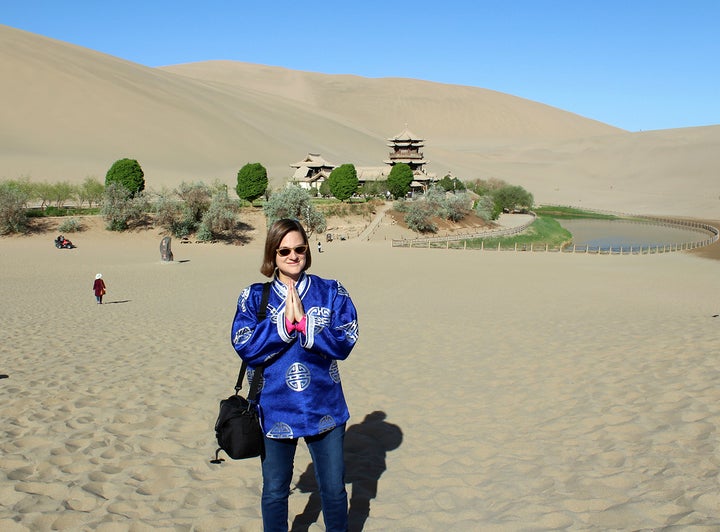
Though the main attraction in Dunhuang is the Mogao Caves, there are other sublime vistas to explore nearby. Echo-Sand Mountain (Mingsha Mountain) and Crescent Lake are located just five kilometers from Dunhuang. These colossal dunes are renowned for the legendary sound of their shifting sands. Since I spent last summer exploring the Gobi desert in Mongolia, I was grateful for the chance to see the Gobi desert from the Chinese side.
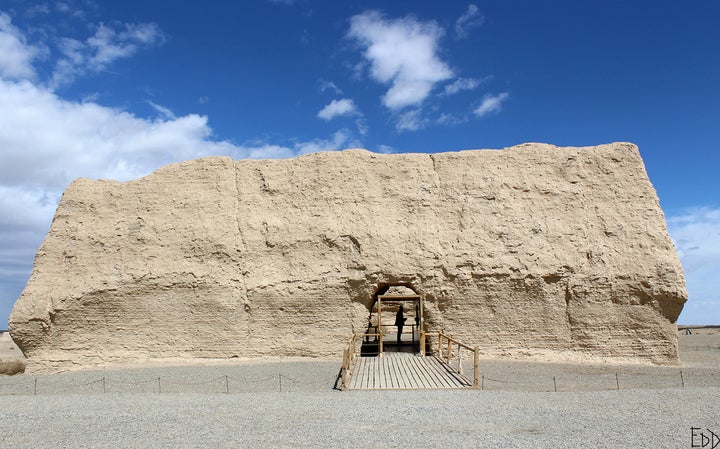
Traveling onwards, we visited the Yumen Pass, often referred to as the Jade Gate, which was once a prime point on the Silk Road connecting China and Central Asia. Nearby, at the Great Wall of the Han Dynasty, I felt inspired to do some tai chi (taiji) after a long day of driving. Unlike stone sections of the Great Wall, this section was constructed with local sand and plants ― and built over 1,000 years before other parts of the wall.
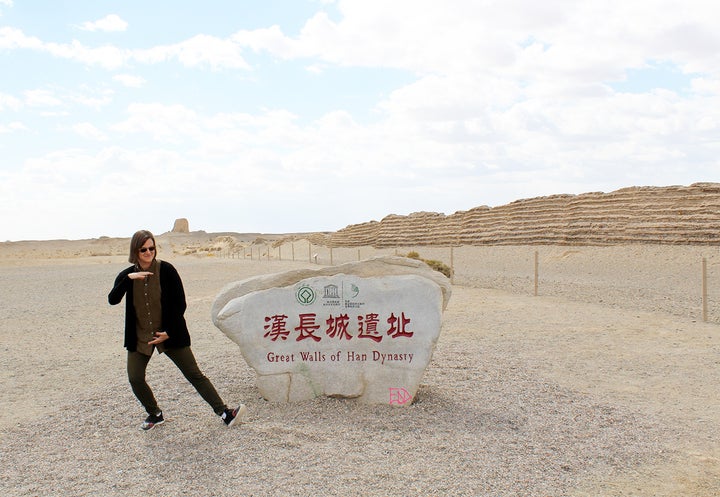
After visiting the Mogao Caves and these nearby sites, we were still hungry for more Buddhist cave art, so we took the train to Turpan ― the hottest place in China. From there, we headed by car towards the Flaming Mountains ― red sandstone cliffs ― to visit the Bezeklik Thousand Buddha Caves in the Xinjiang Uyghur Autonomous Region.
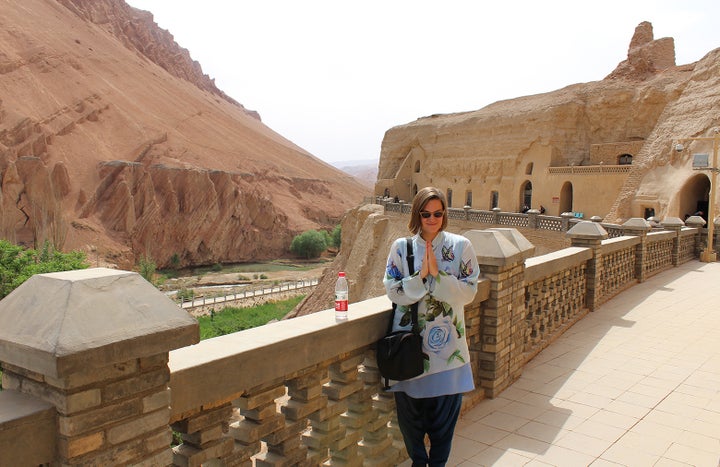
As we surveyed Buddhist murals and Uyghur inscriptions in the Bezeklik Thousand Buddha Caves, we noted considerable damage to the scenes. Many eyes and mouths were hacked out centuries ago by Muslims offended by these figurative images, and European and Japanese explorers took the best preserved representations of Buddha back home during the Great Game. On one sign was written: “The back part of the eastern wall was stolen by [Aurel] Stein in the winter of 1911. It’s empty now.” Admiring the notable art and absences at both Mogao and Bezeklik, we were conscious of how the rich cultural heritage of these remarkable caves has been intimately intertwined with religious conflict, colonialism, politics, and profit.
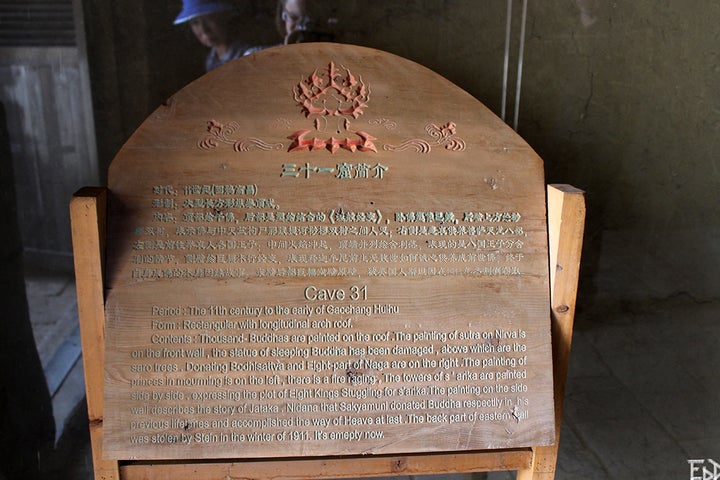
If you’re in or near Los Angeles, definitely go to see the replicas of these Buddhist marvels from the Gobi Desert at the Getty Center ― but if you have the opportunity and means, consider making the trip to China to see the originals in person. With plans in place at Dunhuang to build a privately funded tourist complex and a $250 million conference center for an annual Silk Road Cultural Expo near the caves, the sooner you go to Western China the more likely you will be to beat the crowds and enjoy these Silk Road artistic wonders in peace and quiet ― the way these desert treasures were intended to be experienced.

